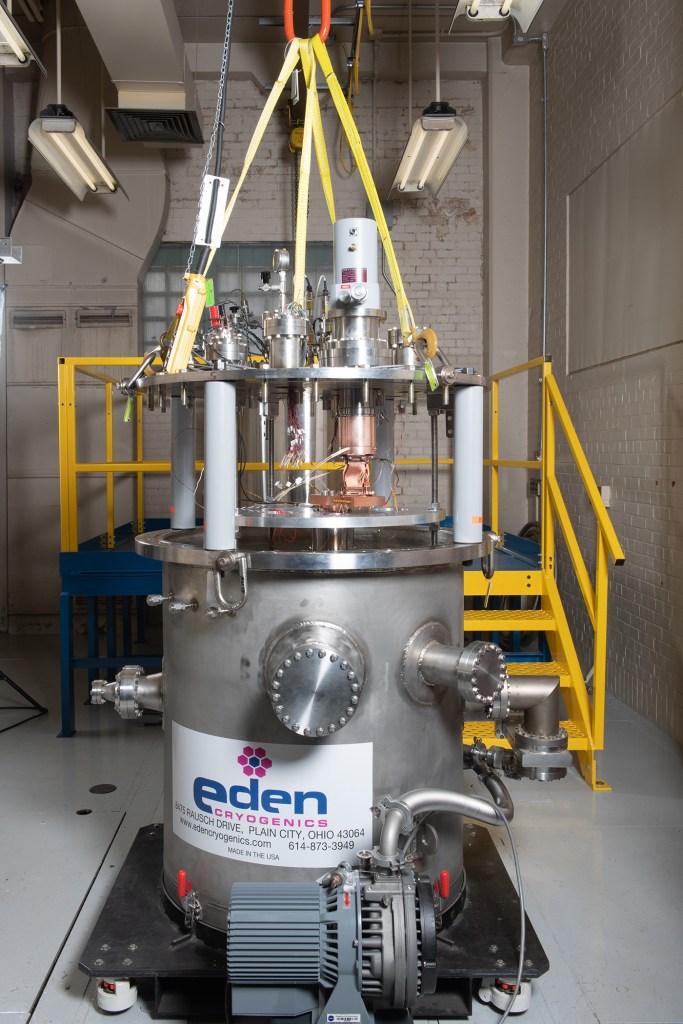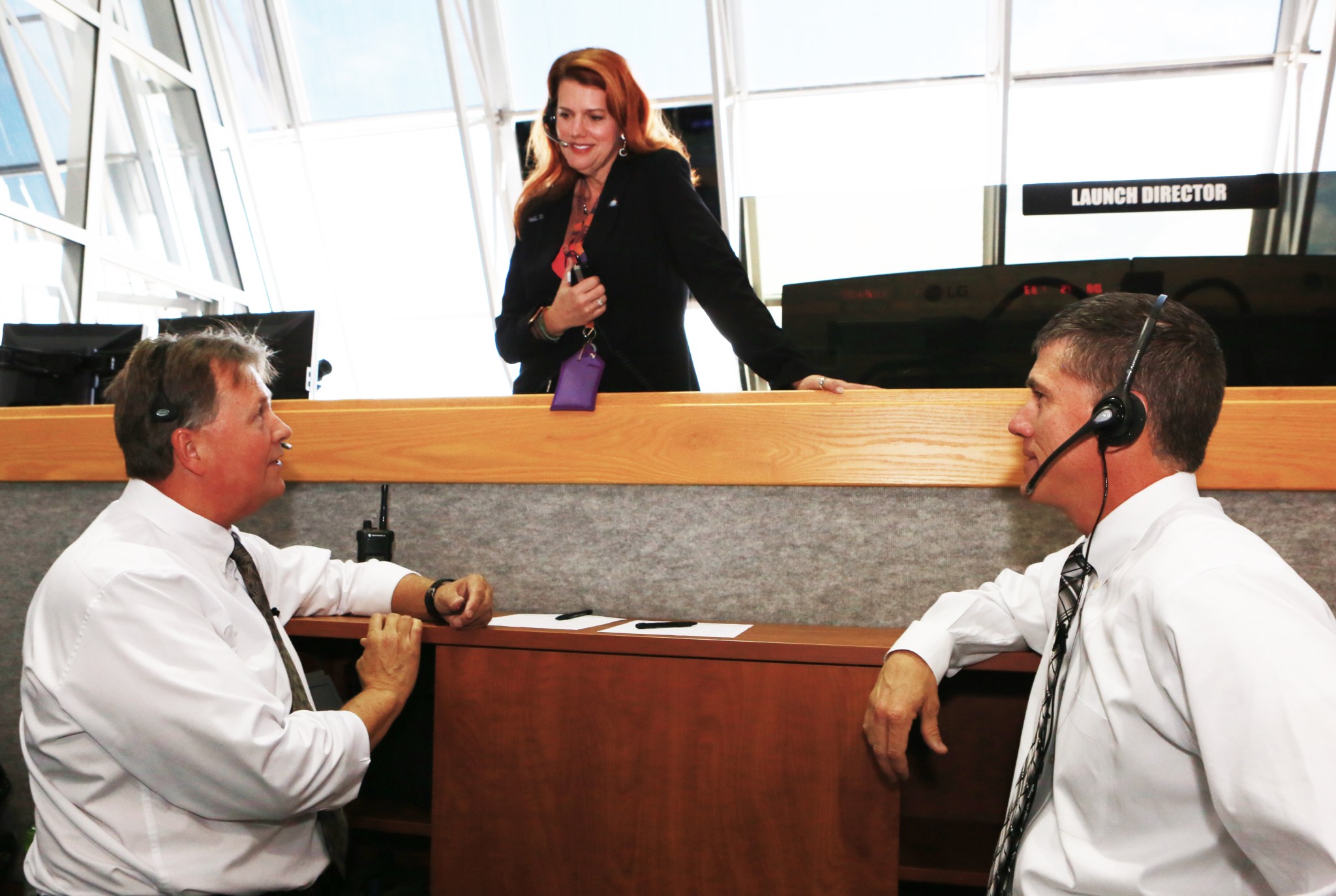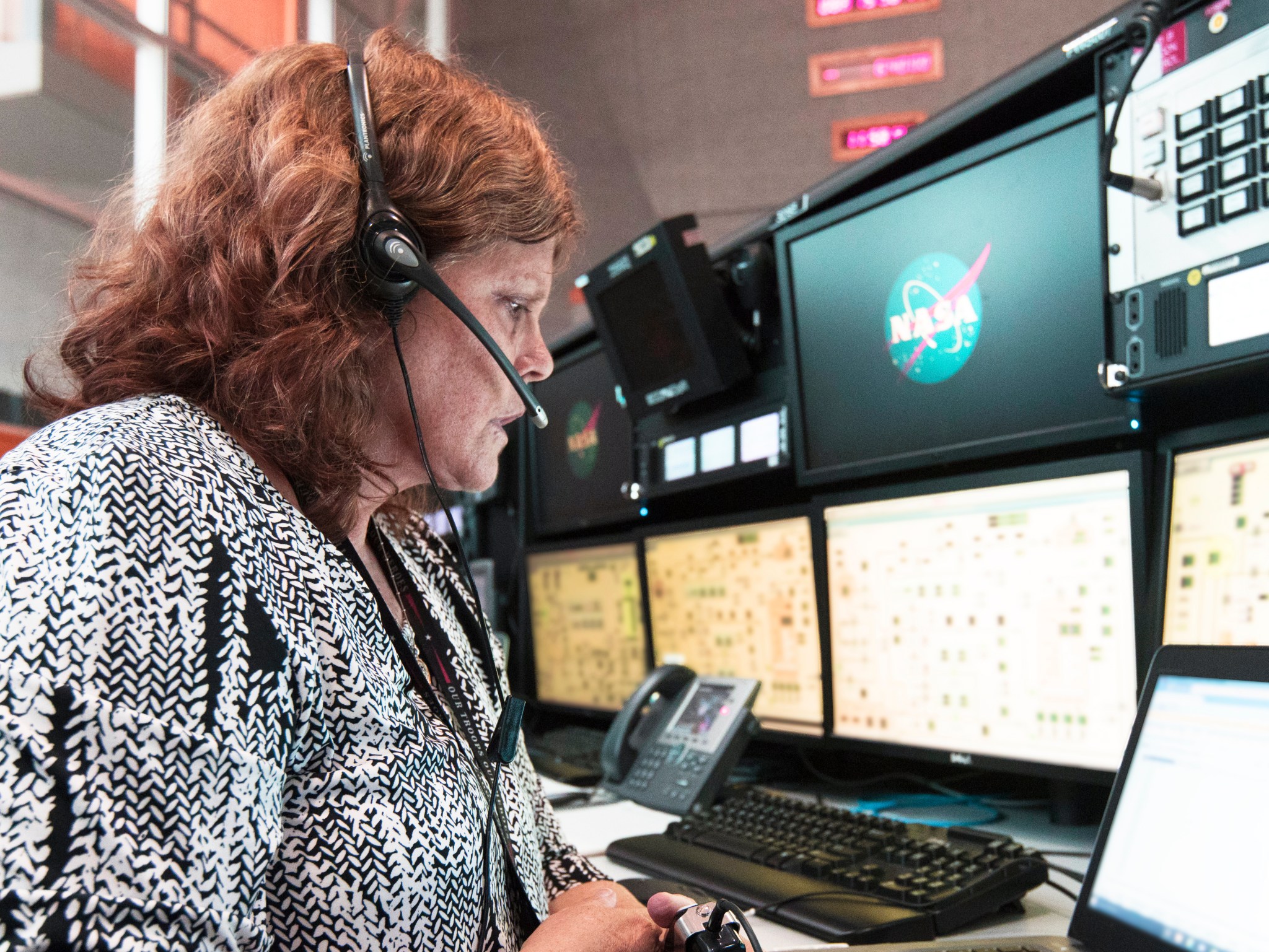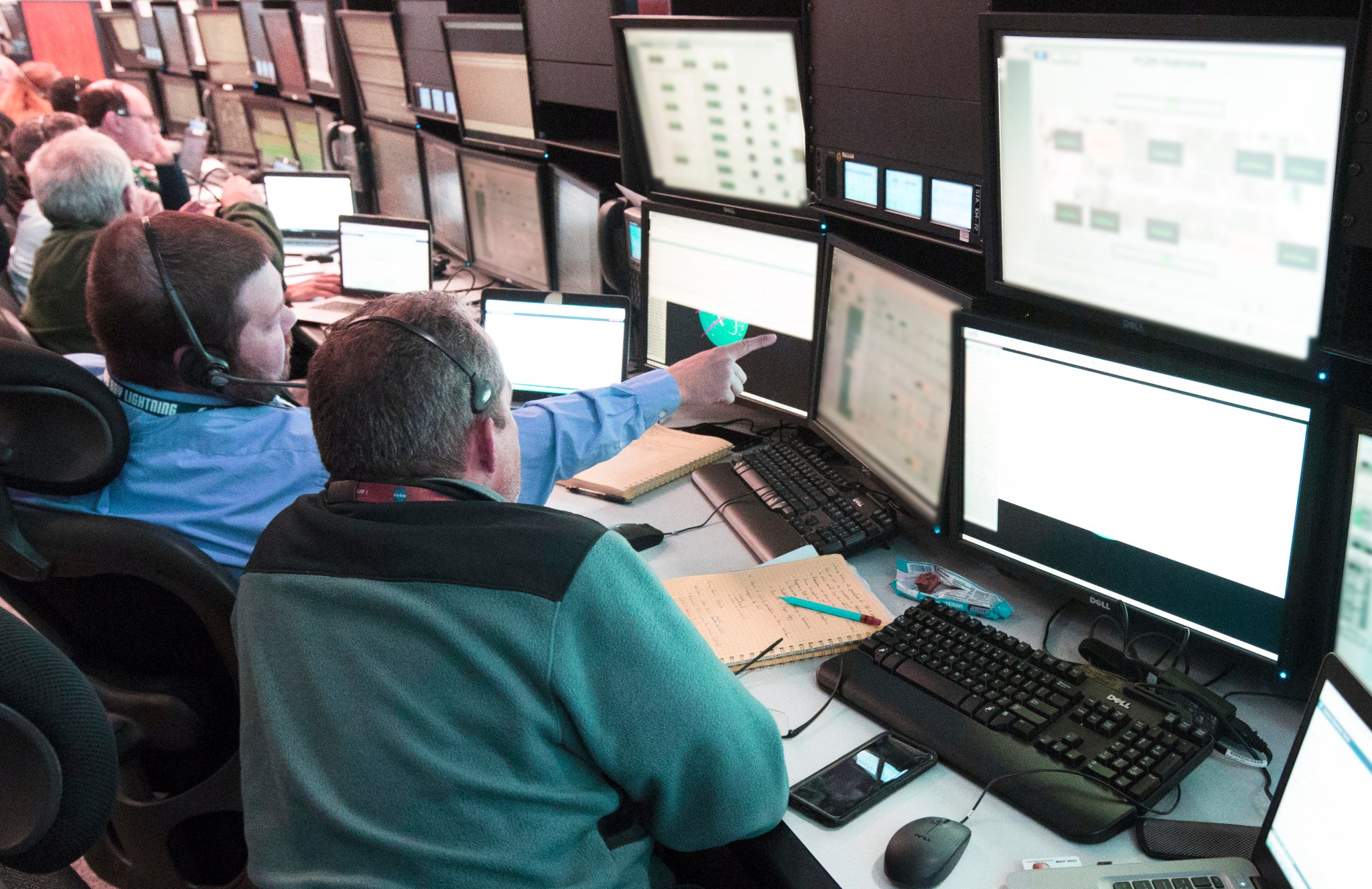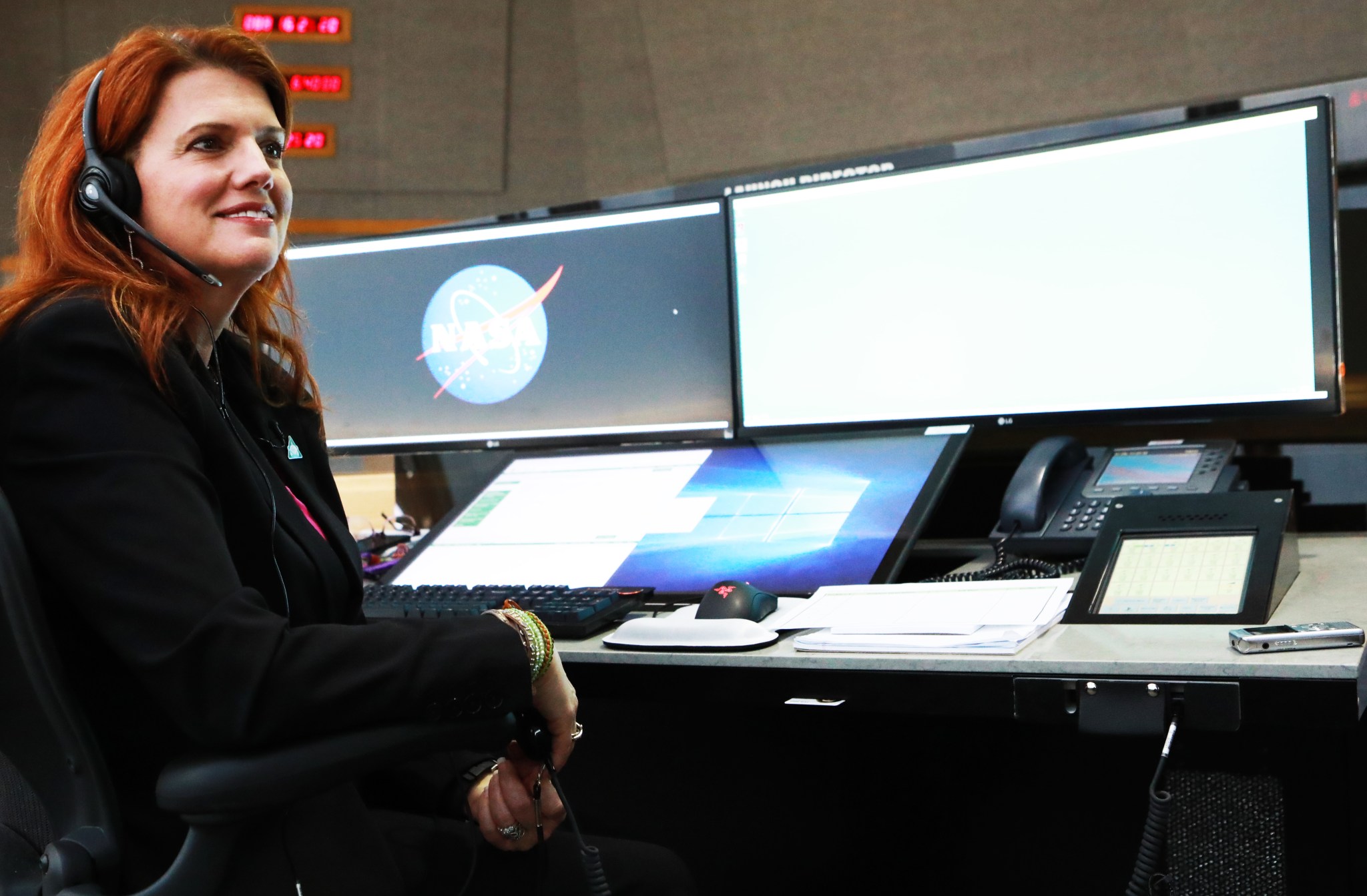By Bob Granath
NASA’s Kennedy Space Center, Florida
“NTD you are GO to proceed with the count.”
With words such as these, NASA Launch Director Charlie Blackwell-Thompson will authorize the NASA Test Director, whose call sign is NTD, to proceed with launching the agency’s Space Launch System (SLS) rocket and Orion spacecraft on Exploration Mission-1 (EM-1), the first integrated test of the new vehicles.
SLS and Orion are part of NASA’s deep space exploration systems designed to send humans to distant destinations, such as the Moon and Mars. An important step in preparation for that first flight took place on March 29 with a demonstration of a portion of the countdown focused on fueling the new launch vehicle.
“This demonstration is important because we are getting an early feel for our tanking operations, the timelines for this work and the kinds of issues that can arise,” said Blackwell-Thompson. “We’ve already started writing our launch countdown procedures for SLS and having an opportunity to run through those operations is extremely beneficial. What we learn from this demonstration and other simulations to come will be rolled into our launch countdown processes and procedures.”
A veteran engineer who has worked at Kennedy since 1988, Blackwell-Thompson will lead the launch team for the first flight test of this next-generation launch system. As launch director, she will make the final “go/no-go” decision prior to liftoff. The NTD is the leader of the SLS test team and is responsible for directing and integrating all flight and ground support testing throughout the countdown.
For EM-1, the countdown is expected to take about 45 hours and 40 minutes beginning two days prior to liftoff. During that time, the SLS core stage and upper stage will require about six hours to load 730,000 gallons of cryogenic liquid hydrogen and liquid oxygen to fuel the four core stage and single upper stage engines.
The countdown is a carefully planned set of procedures leading up to ignition of a rocket’s engine and liftoff. For the recent demonstration, the countdown began at the L-minus 16-hour mark when activities included preparations for propellant loading, and later skipped ahead in the count, altogether taking about five hours.
While there was no SLS at Kennedy’s Launch Complex 39B for the simulation, software called an “emulator” provided a virtual experience of what would be happening with the rocket.
The simulated countdown took place in Firing Room 1 of Kennedy’s Launch Control Center, which is where the team will be on launch day. The firing rooms are the heart of the center’s command and control system. All activities involved with preparing rockets, spacecraft and payloads are controlled by NASA and contractor managers and engineers seated at computer terminals. Likewise, all activities at the launch pads can be operated from a firing room.
During the recent simulation, the launch team became acquainted with new consoles, improved software and the procedures for the SLS.
“It was important to get the launch team in the Firing Room, practicing reporting protocols, taking a look at our displays, and seeing how our emulators and simulators perform,” said Blackwell-Thompson. “What we learn here will help us determine where changes are needed as we progress. There will no doubt be adjustments, but the Firing Room is now set up, pretty much, as it will be on EM-1 launch day.”
Much work and many more multifaceted countdown simulations remain before the launch team will be ready for the first SLS lift-off. Blackwell-Thompson noted that in took a lot of work to get ready for the recent demonstration, and praised the launch team for their outstanding efforts.
“When I think about this team, I think about their skill, the expertise, the love and the passion they bring to their work,” she said. “They are outstanding, and I feel blessed to work with such amazing people. I am confident that this team will be ready for the work ahead and any challenges that come on launch day.”
The first in a series of increasingly complex missions, EM-1 will be an unpiloted flight test that will provide a foundation for human deep space exploration. During this flight, Orion will travel 280,000 miles from Earth, thousands of miles beyond the Moon over the course of about a three-week mission. The second flight of Orion, Exploration Mission-2, will carry crew to test the spacecraft’s crucial systems and prepare for future missions to the Moon, and eventually to Mars.
NASA Interns, UCF Students Build Innovative Launch Director’s Console
By Bob Granath
NASA’s Kennedy Space Center, Florida
When Charlie Blackwell-Thompson took her position at the Launch Director’s console for the recent Space Launch System propellant tanking demonstration, she put to use state-of-the-art technology harnessed by NASA interns and University of Central Florida students.
“Our Information Technology team was working with the interns and students,” she said, “One of their projects was to design an innovative console.”
The goal was to incorporate the latest applicable technologies to enhance existing console capabilities. A few programmatic requirements such as integrating communication, imagery and data systems essential to launch operations were carefully considered to ensure the proposed console design solution supported the Exploration Mission 1 needs. Beyond that, the team had a clean sheet of paper to design what they thought was best.
“It was designed for use anywhere here in the Firing Room,” Blackwell-Thompson said. “Since we didn’t have a console for the launch director, I volunteered “to give it a test drive.’”
“The team did a great job on thinking of the end user needs,” she said. “I like to stand up and see the team, so the monitors raise and lower. The way the headset jack is secured is a nice feature when you are moving around to talk to someone off net. Little details like that make it a great design.”
The simulation on March 29 was its first use.
“It’s great to have this console installed and working,” she said,” and it performed wonderfully!”


















